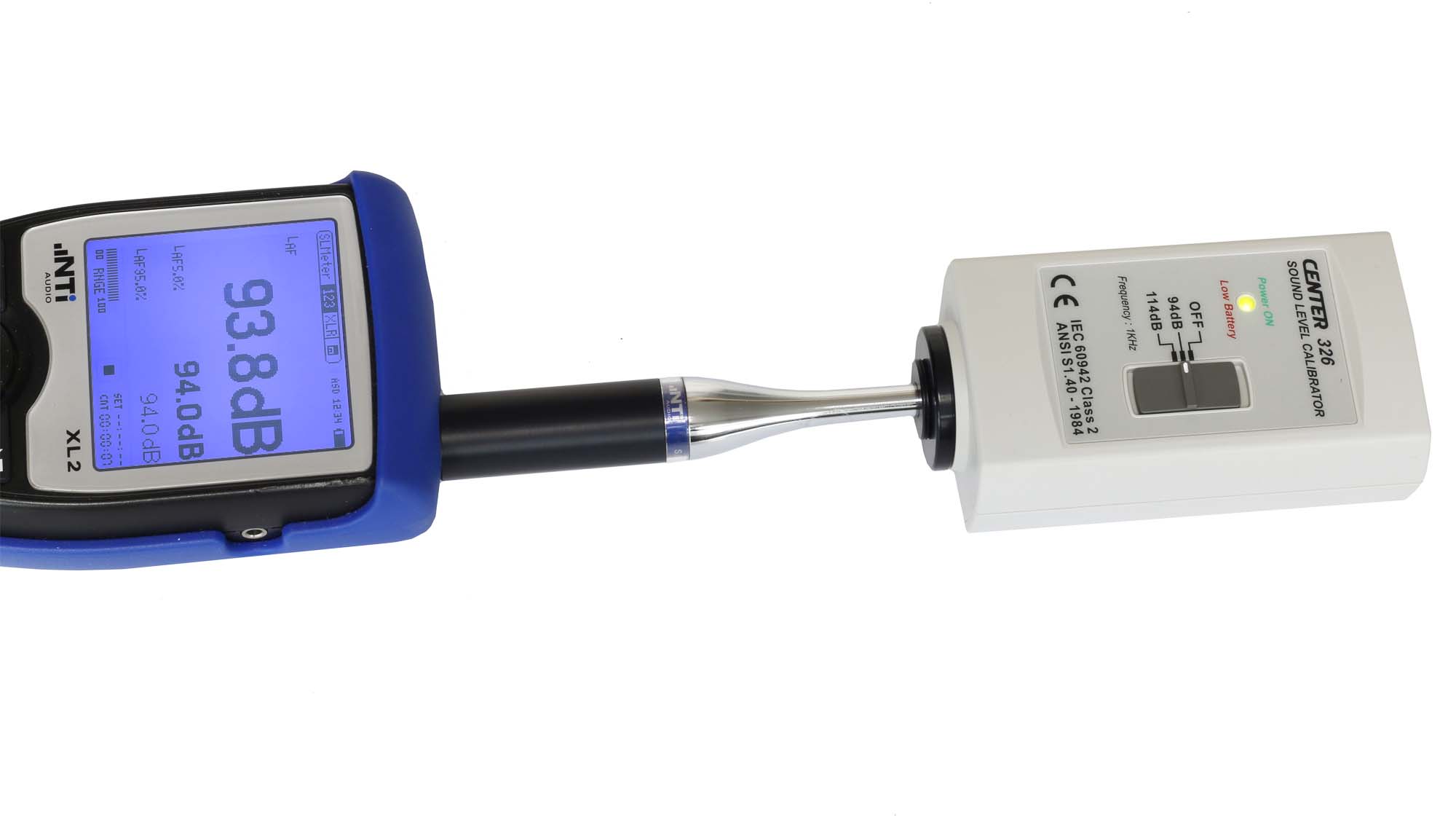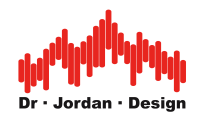Sound level calibrators: overview
A sound level calibrator generates a tone at a fixed frequency and a fixed level. Most widely we have calibrators with a level of 94dB at 1000Hz

You will find all articles in our Webshop
Sound level calibrators can be divided into the following categories
- class 1 devices: deviation +/- 0.2dB The reference class e.g. Bruel Kjaer 4231, Svantek, Norsonic usw.
- class 2 devices:. deviation +/- 0.5dB There are many applications where a little less precision is sufficient. For many years the Center 326 is a proven reliable tool.
- "China" devices: These units do not fullfill class 1 or 2 requirements. These cheap devices are not controlled. This means, they do not include a reference microphone to control the sound level in a closed loop. The initial calibration from the manufacturer is unknown. But for deviations of 1-2dB, these units are useful.
- special calibrators with multi level (74dB , 84dB 104dB) and special frequencies (Center 327 125 and 250Hz)
In addition to brand new calibrators we offer checked and calibrated 2nd hand units (e.g B&K 4231, or the older well known B&K 4230)
General notes on sound level calibrators
A sound level calibrator is an indispensable instrument for quality assurance within acoustic measurement technology.
A sound level calibrator is used to check the entire measurement chain - from the microphone to the display.
How to operate a sound level calibrator?
The sound level calibrator is plugged over the microphone and switched on. Usually such a calibrator produces a level of 94dB. In the sound level meter this value is confirmed and the measuring system calibrates itself to the new sound level. Many measurement regulations/procedures require calibration before and after a measurement.
Construction of a sound level calibrator
A sound level calibrator is a small sound source with a precisely defined sound level. Typically, we use a sound level of 94dB. 114dB is widely used in architectural acoustics. Pistonphones with 124dB are typically used in laboratories, but not for field measurements.
A sound level calibrator consists of a small pressure chamber, typically tuned to the excitation frequency.
The sound source itself is usually a small loudspeaker, but may also be a piezo element. More sophisticated sound level calibrators also contain a microphone, so that the sound level inside the pressure chamber is checked and readjusted.
This control loop in particular is very important, as it means that leaks or changes in the chamber volume do not have any effect on the sound level inside the chamber.
Calibrators in the lower price segment often do not include this important function for cost reasons (e.g. calibrators ND9 or AZ8930)
Very high-quality calibrators additionally contain temperature sensors as well as a pressure sensor - a barometer - to compensate for static air pressure.
What frequency does a sound level calibrator use?
Sound level calibrators are offered with different frequencies. Common frequencies are 1000Hz. At this frequency, the A and C weighting curves have an attenuation of 0dB. But you can also find frequencies of 125Hz, 250Hz or 500Hz. However, these devices are typically used for more specialized applications.
Accuracy
The typical accuracy of a sound level calibrator is between 0.2 (class 1) and 0.5dB (class 2).
How often should a sound level calibrator be verified itself?
The sound level calibrator itself should be tested at regular intervals by a laboratory. Typical intervals are 1-2years.
Important notes on the use of sound level calibrators
Always insert the microphone slowly into the sound level calibrator, as moving it too quickly will cause high pressure fluctuations that could possibly damage the membrane of the sound level calibrator or the microphone.
A quiet environment is required for accurate calibration, as external noise can affect the calibration. If the ambient noise cannot be avoided at least a higher reference level e.g. 114dB should be used to have enough distance to the ambient noise.
For measurements at higher altitudes, the enclosed correction table should be used due to the lower air pressure. The deviation between an altitude above sea level of 0m (air pressure 1013hPa) and 3000m (702hPa) is 0.5dB.


